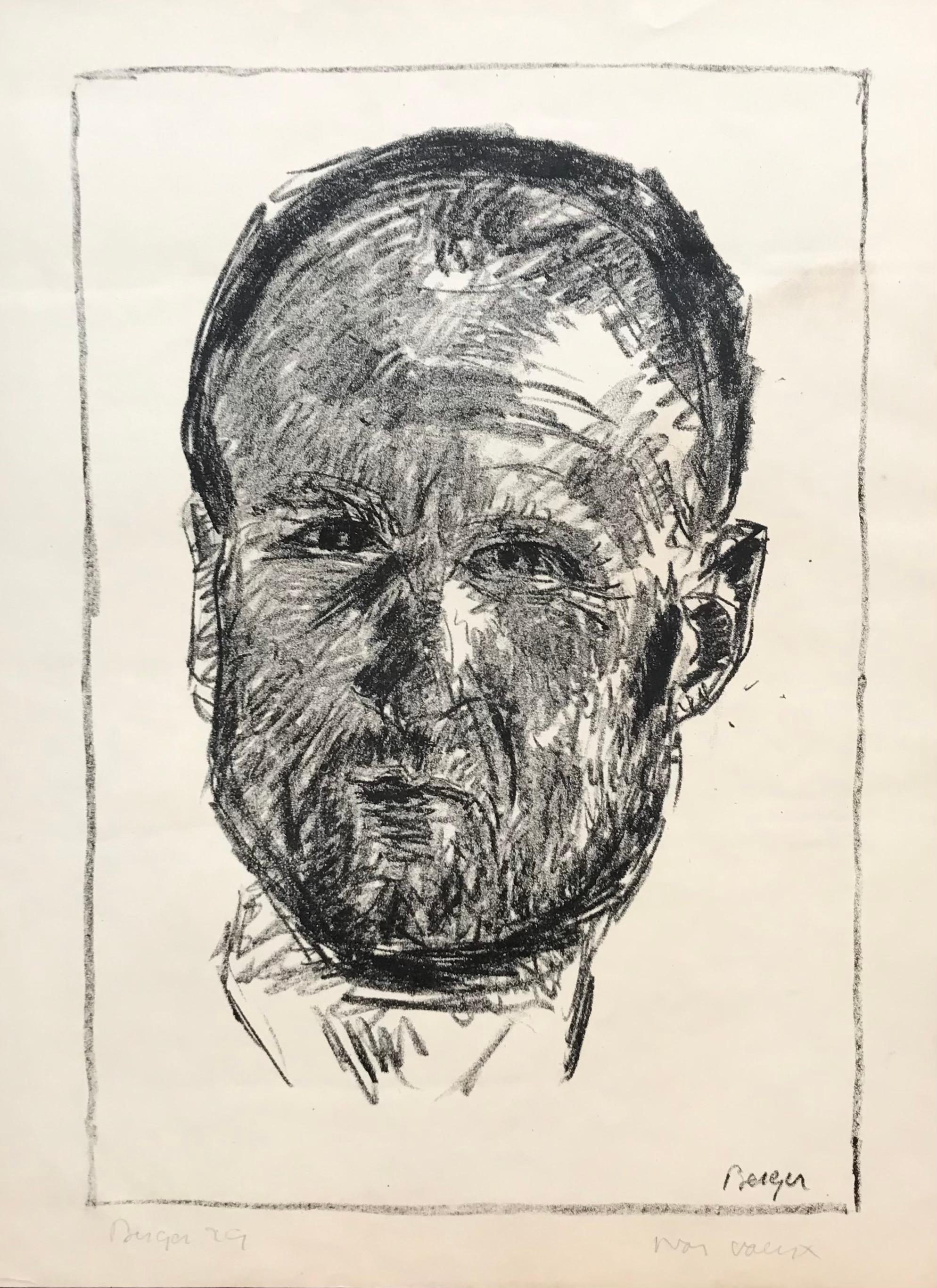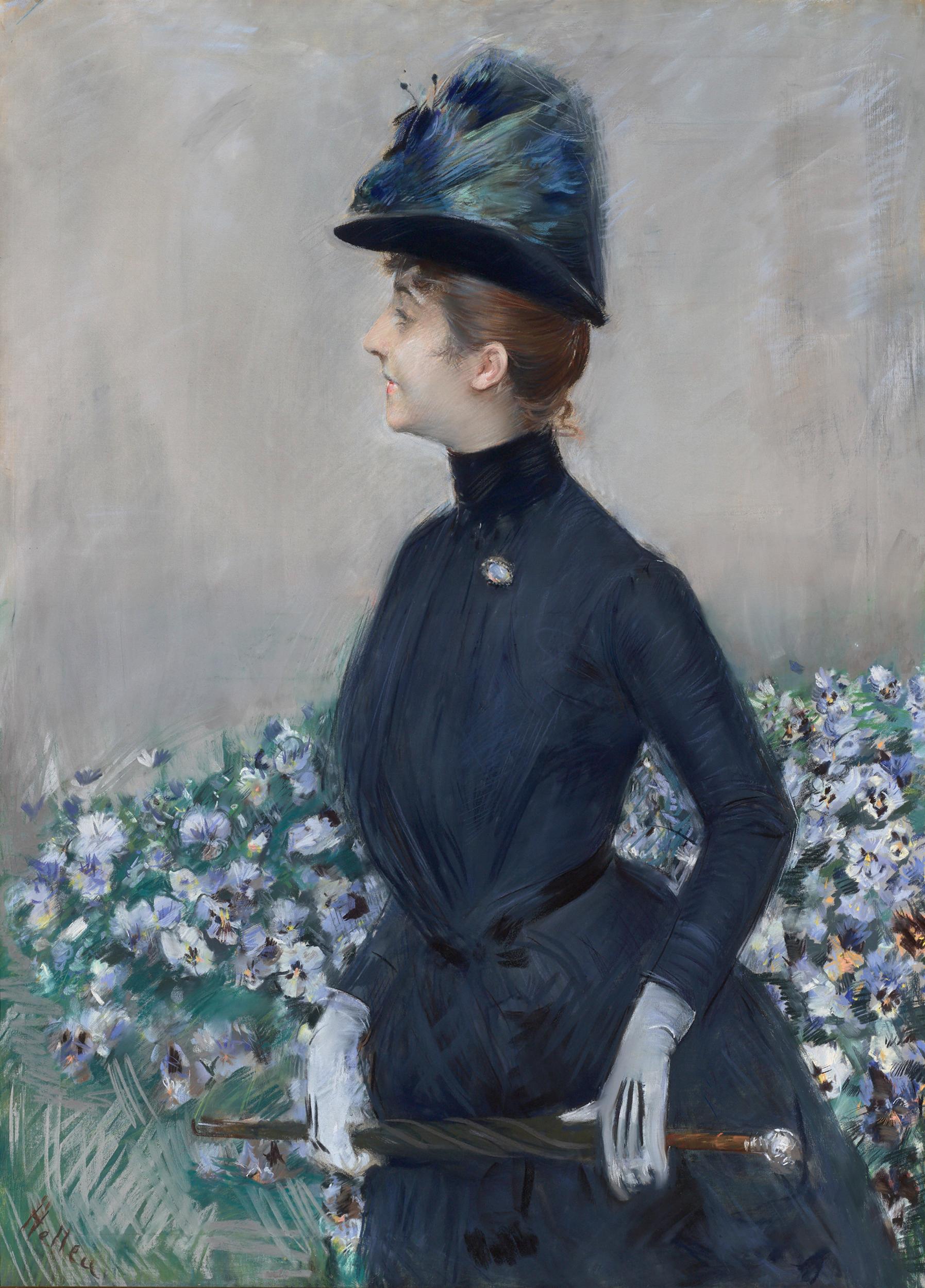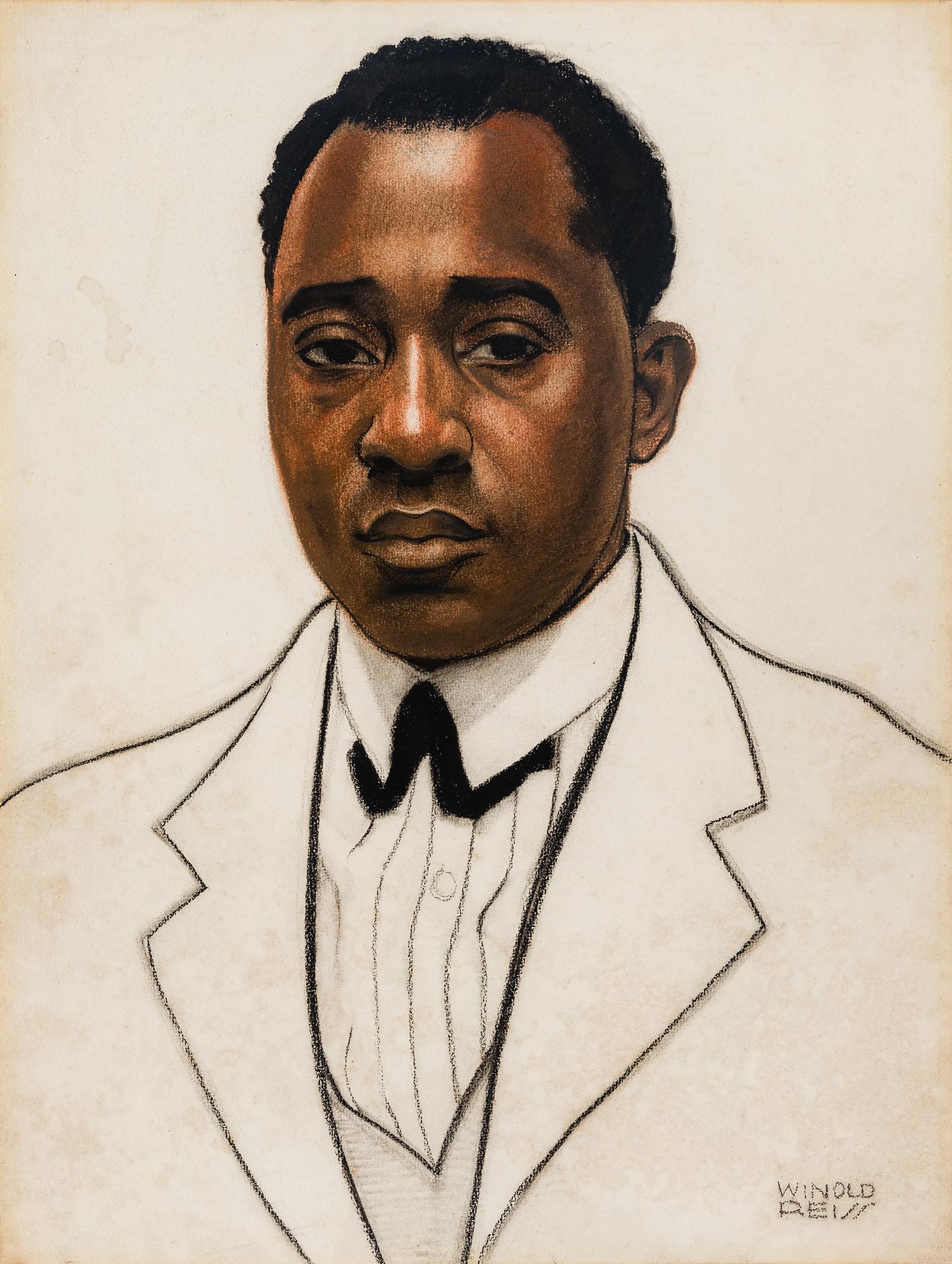Items Similar to Pensive young woman by William Goliasch - Pastel on paper
Want more images or videos?
Request additional images or videos from the seller
1 of 11
William GoliaschPensive young woman by William Goliasch - Pastel on paper
About the Item
Work on Kraft paper
Red wooden frame with glass pane
65 x 52 x 1,5 cm
- Creator:William Goliasch (1922 - 1986, Swiss)
- Dimensions:Height: 18.12 in (46 cm)Width: 13.39 in (34 cm)Depth: 0.4 in (1 cm)
- Medium:
- Movement & Style:
- Period:
- Condition:
- Gallery Location:Geneva, CH
- Reference Number:1stDibs: LU143427981422
About the Seller
5.0
Platinum Seller
These expertly vetted sellers are 1stDibs' most experienced sellers and are rated highest by our customers.
Established in 2016
1stDibs seller since 2020
200 sales on 1stDibs
Typical response time: 1 hour
- ShippingRetrieving quote...Ships From: Geneva, Switzerland
- Return PolicyA return for this item may be initiated within 7 days of delivery.
More From This SellerView All
- Portrait of a man by Hans Berger - Pastel on paper 37x50 cmLocated in Geneva, CHWork on paperCategory
1920s Modern Portrait Drawings and Watercolors
MaterialsPastel
- The clown by Gil Froidevaux - Pastel on paperLocated in Geneva, CHSwiss painter Work on paper Gilded wood frame with glass pane 62 x 48 x 2 cmCategory
21st Century and Contemporary Modern Portrait Drawings and Watercolors
MaterialsPastel
- Portrait of a woman by Emile Hornung - Pastel on paper 48x63 cmBy Charles Émile HornungLocated in Geneva, CHWork on watercolor paperCategory
Early 20th Century Modern Portrait Drawings and Watercolors
MaterialsCarbon Pencil, Pastel
- Portrait of a lady by Stephanie Guerzoni - Pastel on paper 38x51 cmBy Stéphanie GuerzoniLocated in Geneva, CHWork on paper sold with frame (white wooden frame with glass). The total size with frame is 46,5 x 56,5 cm Stéphanie Guerzoni is a Swiss and Italian painter born April 15, 1887 in ...Category
Early 20th Century Academic Portrait Drawings and Watercolors
MaterialsPastel, Crayon
- "Pre-show briefing" by Luc Michel Schüpfer - Pastel on paperLocated in Geneva, CHPastel work on paper without frameCategory
1950s Neo-Expressionist Portrait Drawings and Watercolors
MaterialsPastel
- Young woman Drawing on paper 23x32 cmLocated in Geneva, CHWork on paper Monogram L.T.C.Category
Mid-20th Century Academic Portrait Drawings and Watercolors
MaterialsCharcoal, Pastel
You May Also Like
- Spanish folk dance Jota pastel drawingBy Alfredo OpissoLocated in Barcelona, BarcelonaAlfredo Opisso Cardona (1907-1980) - Jota - Pastel Measures work 46x36cm. Frame measures 65x55 cm.Category
1960s Modern Figurative Drawings and Watercolors
MaterialsPastel
- Melany the artist's daughter signed pastel painting with original gallery labelBy Wolf KahnLocated in New York, NYWolf Kahn Melany (The Artist's Daughter), 1970 Pastel on paper painting Hand signed by Wolf Kahn on the front Unique Frame included: newly matted and framed in a museum quality wood ...Category
1970s Modern Portrait Drawings and Watercolors
MaterialsPastel
- La femme aux fleurs (Portrait de Mathilde See)By Paul César HelleuLocated in New Orleans, LAPaul César Helleu is regarded among the most sought-after society portraitists of his era, and his Belle Époque works rival those of his contemporaries John Singer Sargent and Giovanni Boldini. He is best remembered for capturing the era's most beautiful socialites, including Consuelo Vanderbilt, the Duchess of Marlborough, the Comtesse de Loriol Chandieu and the Comtesse Mathieu de Noailles, among others. This work, however, stands out in that it captures the charming likeness of one of his art world cohorts, Mathilde See, a Parisian-born decorator and painter of floral still lifes. She is the essence of the modern woman, captured in her fashionable dress as she strolls along the flower-lined streets of Paris. Commanding in size, Portrait de Mathilde See fully displays Helleu's mastery over the medium of pastel. The muted palette of greys and blues is typical of the artist, bringing a harmony and cohesiveness to the composition. Furthermore, Helleu cleverly alludes to See's own artistic output with a backdrop of vibrant floral blooms, enlivening the canvas and complementing the greens and blues of the peacock feather adorning her hat. The portrait is all the more significant thanks to its provenance. It was previously in the collection of A. Alfred Taubman, one of America's most successful entrepreneurs and one-time owner of Sotheby's. Considering Taubman encountered some of the most noteworthy and beautiful works of art ever made through his auction house, the fact that he chose this portrait by Helleu to grace his collection is a testament to its import. Born in Brittany in 1859, Helleu moved to Paris in 1876 in order to study at the École des Beaux-Arts. Like so many other artists of his generation, he was trained there under the Academic master Jean-Léon Gérôme. That same year, he also attended the Second Impressionist Exhibition...Category
20th Century Modern Portrait Paintings
MaterialsLinen, Pastel
- Portrait of Robert Nathaniel Dett (1882-1943)By Winold ReissLocated in New York, NYSigned (at lower right): WINOLD/REISSCategory
20th Century American Modern Portrait Drawings and Watercolors
MaterialsPastel
- Japanese GirlBy Winold ReissLocated in New York, NYSigned (at lower right): WINOLD/REISSCategory
20th Century American Modern Portrait Drawings and Watercolors
MaterialsPastel
- Rare Modernist Hungarian Rabbi Pastel Drawing Gouache Painting Judaica Art DecoBy Hugó ScheiberLocated in Surfside, FLRabbi in the synagogue at prayer wearing tallit and tefillin. Hugó Scheiber (born 29 September 1873 in Budapest – died there 7 March 1950) was a Hungarian modernist painter. Hugo Scheiber was brought from Budapest to Vienna at the age of eight where his father worked as a sign painter for the Prater Theater. At fifteen, he returned with his family to Budapest and began working during the day to help support them and attending painting classes at the School of Design in the evening, where Henrik Papp was one of his teachers. He completed his studies in 1900. His work was at first in a post-Impressionistic style but from 1910 onward showed his increasing interest in German Expressionism and Futurism. This made it of little interest to the conservative Hungarian art establishment. However, in 1915 he met the great Italian avant-gardist Filippo Tommaso Marinetti and the two painters became close friends. Marinetti invited him to join the Futurist Movement. The uniquely modernist style that he developed was, however, closer to German Expressionism than to Futurism and eventually drifted toward an international art deco manner similar to Erté's. In 1919, he and his friend Béla Kádar held an exhibition at the Hevesy Salon in Vienna. It was a great success and at last caused the Budapest Art Museum to acquire some of Scheiber's drawings. Encouraged, Scheiber came back to live in Vienna in 1920. A turning point in Scheiber's career came a year later, when Herwarth Walden, founder of Germany's leading avant-garde periodical, Der Sturm, and of the Sturm Gallery in Berlin, became interested in Scheiber's work. Scheiber moved to Berlin in 1922, and his paintings soon appeared regularly in Walden's magazine and elsewhere. Exhibitions of his work followed in London, Rome, La Paz, and New York. Scheiber's move to Germany coincided with a significant exodus of Hungarian artists to Berlin, including Laszlo Moholy-Nagy and Sandor Bortnyik. There had been a major split in ideology among the Hungarian avant-garde. The Constructivist and leader of the Hungarian avantgarde, Lajos Kassák (painted by Hugó Scheiber in 1930) believed that art should relate to all the needs of contemporary humankind. Thus he refused to compromise the purity of his style to reflect the demands of either the ruling class or socialists and communists. The other camp believed that an artist should be a figurehead for social and political change. The fall out and factions that resulted from this politicisation resulted in most of the Hungarian avant gardists leaving Vienna for Berlin. Hungarian émigrés made up one of the largest minority groups in the German capital and the influx of their painters had a significant effect on Hungarian and international art. Another turning point of Scheiber's career came in 1926, with the New York exhibition of the Société Anonyme, organized by Katherine Dreier. Scheiber and other important avant garde artists from more than twenty-three countries were represented. In 1933, Scheiber was invited by Marinetti to participate in the great meeting of the Futurists held in Rome in late April 1933, Mostra Nazionale d’Arte Futurista where he was received with great enthusiasm. Gradually, the Hungarian artists began to return home, particularly with the rise of Nazism in Germany. Kádar went back from Berlin in about 1932 and Scheiber followed in 1934. He was then at the peak of his powers and had a special flair in depicting café and cabaret life in vivid colors, sturdily abstracted forms and spontaneous brush strokes. Scheiber depicted cosmopolitan modern life using stylized shapes and expressive colors. His preferred subjects were cabaret and street scenes, jazz musicians, flappers, and a series of self-portraits (usually with a cigar). his principal media being gouache and oil. He was a member of the prestigious New Society of Artists (KUT—Képzőművészek Új Társasága)and seems to have weathered Hungary's post–World War II transition to state-communism without difficulty. He continued to be well regarded, eventually even receiving the posthumous honor of having one of his images used for a Russian Soviet postage stamp (see image above). Hugó Scheiber died in Budapest in 1950. Paintings by Hugó Scheiber form part of permanent museum collections in Budapest (Hungarian National Museum), Pecs (Jannus Pannonius Museum), Vienna, New York, Bern and elsewhere. His work has also been shown in many important exhibitions, including: "The Nell Walden Collection," Kunsthaus Zürich (1945) "Collection of the Société Anonyme," Yale University Art Gallery, New Haven, Connecticut (1950) "Hugó Scheiber: A Commemorative Exhibition," Hungarian National Museum, Budapest (1964) "Ungarische Avantgarde," Galleria del Levante, Munich (1971) "Paris-Berlin 1900-1930," Centre Georges Pompidou, Paris (1978) "L’Art en Hongrie, 1905-1920," Musée d’Art et l’Industrie, Saint-Etienne (1980) "Ungarische Avantgarde in der Weimarer Republik," Marburg (1986) "Modernizmus," Eresz & Maklary Gallery, Budapest (2006) "Hugó Scheiber & Béla Kádár," Galerie le Minotaure, Paris and Tel Aviv (2007) Hugó Scheiber's paintings continue to be regularly sold at Sotheby's, Christie's, Gillen's Arts (London), Papillon Gallery (Los Angeles) and other auction houses. He was included in the exhibition The Art Of Modern Hungary 1931 and other exhibitions along with Vilmos Novak Aba, Count Julius Batthyany, Pal Bor, Bela Buky, Denes Csanky, Istvan Csok, Bela Czobel, Peter Di Gabor, Bela Ivanyi Grunwald, Baron Ferenc Hatvany, Lipot Herman, Odon Marffy, C. Pal Molnar...Category
Early 20th Century Modern Figurative Paintings
MaterialsPaper, Charcoal, Pastel, Watercolor, Gouache




